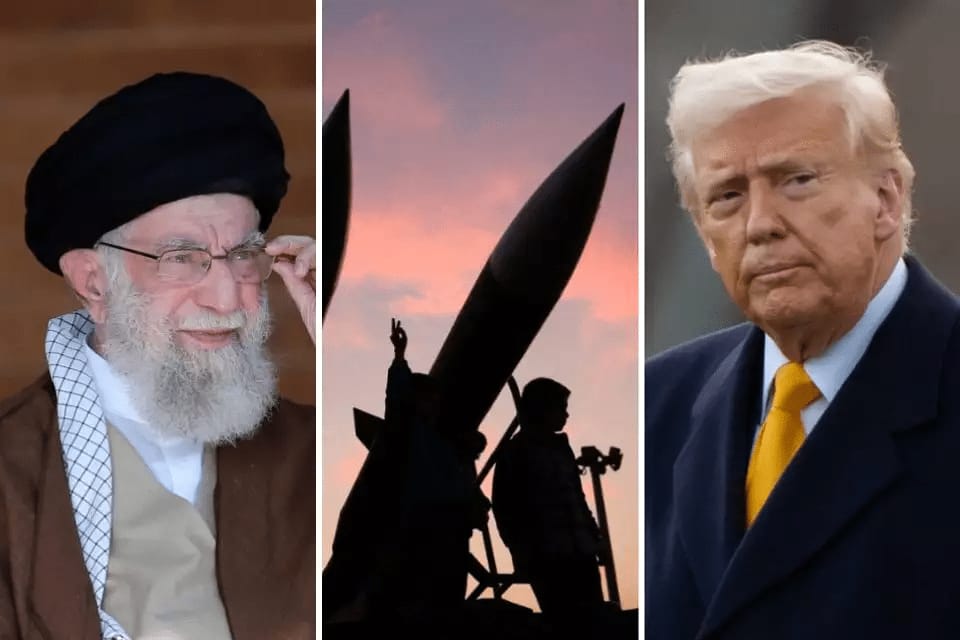Iran has ramped up its rhetoric and military posturing, issuing stark warnings to the United States amid a backdrop of nuclear tensions and regional power plays. As of April 2, 2025, the Islamic Republic’s latest threats—coupled with its advancing missile capabilities and proxy conflicts—have set the stage for a potential clash with Washington. Here’s a breakdown of the unfolding crisis and what it means for both nations.
Khamenei’s Bold Warning
On March 31, Iran’s Supreme Leader Ayatollah Ali Khamenei delivered a fiery message: any U.S. attack would be met with a “strong blow.” Speaking after Eid al-Fitr prayers, Khamenei dismissed President Donald Trump’s threats to bomb Iran unless it agrees to a new nuclear deal as improbable but promised a “decisive and immediate” response if acted upon. This came after Trump’s March 30 ultimatum: negotiate or face military consequences, a stance reinforced by the deployment of B-2 stealth bombers to Diego Garcia, signaling U.S. readiness for strikes on Iran’s nuclear sites.
Khamenei’s defiance wasn’t just bluster. Iran handed a formal warning to Switzerland’s embassy—representing U.S. interests—vowing retaliation against any aggression. The Supreme Leader also hinted at internal resilience, claiming the Iranian people would quash any U.S.-backed “sedition,” a nod to past protests blamed on Western interference.Missiles and Proxies: Iran’s Arsenal Grows
Iran’s threats aren’t empty. On March 24, state media showcased advanced missile systems like the Abu Mahdi (600 km range) and Qader (300 km), capable of striking U.S. bases in Qatar and Bahrain, including CENTCOM headquarters and the Fifth Fleet. This display followed Trump’s intensified “maximum pressure” campaign, which includes new sanctions on Iran’s oil sector and airstrikes on its Houthi allies in Yemen. Posts on X from Sputnik International highlighted how these anti-ship missiles could disrupt Persian Gulf shipping—a economic lifeline—far beyond the Houthis’ Red Sea antics.
Meanwhile, Iran’s Revolutionary Guard Corps (IRGC) Aerospace Commander Amirali Hajizadeh upped the ante, warning that U.S. bases across the region are “glass houses” vulnerable to attack. This rhetoric aligns with Iran’s strategy of deterrence through its “Axis of Resistance”—proxies like Hezbollah and the Houthis—though IRGC chief Hossein Salami recently claimed these groups act independently, a likely bid to dodge direct U.S. reprisals.
Nuclear Standoff: A Ticking Clock
At the heart of this escalation is Iran’s nuclear program. The International Atomic Energy Agency reports Tehran is enriching uranium to near weapons-grade levels at an “accelerated” pace, a red line for both the U.S. and Israel. Trump’s letter to Khamenei, sent via the UAE and responded to through Oman on March 26, demanded direct talks, but Iran rejected face-to-face negotiations under pressure. Foreign Minister Abbas Araghchi signaled openness to indirect talks, yet Khamenei’s skepticism—calling U.S. offers a path to “new demands”—suggests a stalemate.
Some Iranian hardliners, per media estimates, even prefer a U.S. or Israeli strike over compromise, believing it could rally national unity against a faltering regime. With the 2015 nuclear deal’s “snapback” sanctions expiring in October 2025, time is ticking for diplomatic off-ramps.
Regional Ripples and U.S. Resolve
The U.S. isn’t backing down. Defense Secretary Pete Hegseth bolstered Middle East forces with warplanes on April 1, a response to Iran’s Houthi support and nuclear defiance. Trump’s threats of secondary tariffs—punishing nations trading with Iran—add economic teeth to his military posture. Yet, Iran’s alignment with Russia and China, who skirt sanctions, complicates this strategy.
March 28 analysis from the American Enterprise Institute warned that U.S. carriers might reposition outside the Persian Gulf soon, a sign of imminent action.
Regionally, the stakes are sky-high. Iran’s threats to close the Strait of Hormuz, voiced by IRGC Navy Commander Alireza Tangsiri on March 29, could choke global oil flows. Hezbollah’s degraded state in Lebanon and Hamas’s losses in Gaza haven’t deterred Tehran’s resolve, though they’ve strained its proxy network.
What’s Next?
Iran’s latest threats signal a regime under pressure but unwilling to bend. Trump’s dual-track approach—talks or bombs—faces a test: can economic strangulation and military brinkmanship force a deal, or will they ignite a war? Experts warn a U.S. strike could push Iran to sprint for a bomb,
a catastrophic miscalculation. As one X post noted, “You cannot compare Yemen to Iran”—a reminder of the scale of this potential conflict.
For now, both sides are locked in a high-stakes stare-down. Iran’s missiles gleam, its leaders growl, and the U.S. flexes its might. The world waits, wondering if this week’s words will turn to fire—or fade into another tense chapter of this decades-long feud.







